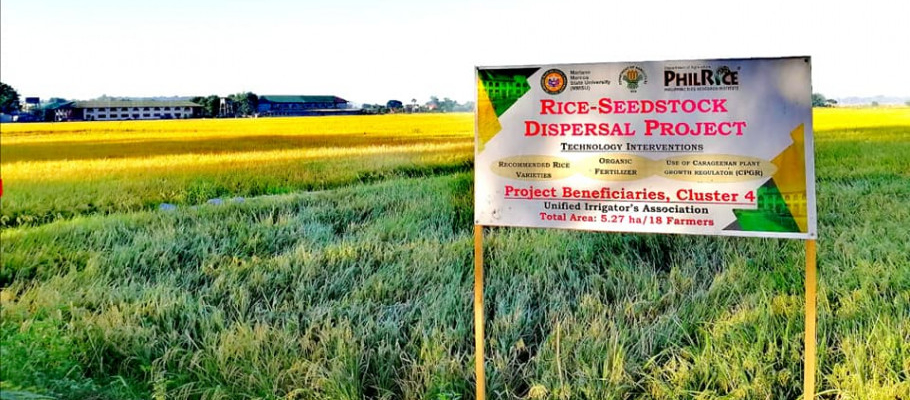
MMSU sees bountiful rice harvest this year-end
Despite being slightly battered by successive typhoons this year and the adverse effects of the COVID-19 pandemic in the country, the Mariano Marcos State University (MMSU) is still expecting a bountiful rice harvest, boosting chances it could help sustain the staple grain consumption of the province this year.
Mr. Raymond Rahon of the university’s Rice Seed Production Project said MMSU will likely produce 120 tons (2,400 sacks) of fresh and unmilled rice, which is way above its previous average productions of about 45 to 50 tons per hectare.
Last August, the university planted registered and foundation seeds to its 30-hectare production farms designated for its rice production project and for the MMSU-CARES program, or the Coordinated Agribusiness, Research, and Extension Strategies.
Ms. Cleofe Tolentino, in-charge of the MMSU-CARES, said the registered seeds are NSIC Rc160 and PSB Rc82 and these were planted in the 27-hectare CARES area by 88 farmers who belong to the 5 cluster groups, while foundation seeds of NSIC Rc222 were planted in the 3-hectare production area.
Registered seeds produced from the foundation variety may be used as seed stocks for the university’s Rice Seed Dispersal Project, while those harvested from the registered variety may be used as commercial stocks.
These varieties are usually preferred by many farmers because they have good eating quality and are resistant to common pests and diseases of rice.
NSIC Rc160, or commonly known as Tubigan 14, has a yield potential of up to 8.2 tons per hectare under favorable irrigated lowland condition. It has intermediate reactions to two major rice diseases — blast and bacterial leaf blight – and is resistant to yellow stem borer, but moderately resistant to white stem borer.
This variety is resistant to flood-prone rice areas in the country, which are estimated at 0.14 million hectares.
On the other hand, PSB Rc82 is an early-maturing variety which is most suitable in lowland areas like those in Region 1. It matures at 107 days after sowing and can be planted through broadcast, direct seeding, or transplanting.
Meanwhile, NSIC Rc222, or commonly known as Tubigan 18, has a yield potential of 10 tons per hectare. It has intermediate resistance to pest and diseases, and is also adapted to multi-stress conditions and performs well in different rice environments such as rainfed, submerged, and saline (concentration of salt dissolved in water) areas.
Last November 26, the MMSU Extension Directorate conducted a cross-farm visit in these areas to showcase the improved rice production technologies that were applied so that farmers may duplicate them in their farms. Some 40 farmers and 10 seed growers in the City of Batac attended the cross-farm visit.
Yearly, the MMSU is joining the Department of Agriculture in boosting rice production in the province by having a part in the estimated 4.10 percent increase of rice production in the first quarter of 2020.
In previous copping seasons, the MMSU’s rice output was boosted by ample rains that led to the bountiful harvests, and the repair and rehabilitation of irrigation systems in the campus, along with better rains, were the primary factors behind the university’s farm production sector’s recovery.
Since the university is selling a slightly lower price of rice than the local commercial markets, grain traders in the province are looking for signs that they might not need to import rice from other provinces, which usually give potentially exceeding prices above that which was imposed by the National Foods Authority.
With the continuing increase of rice yield, the university might be confident to claim that its palay output performance this year is a step toward rice self-sufficiency of its employees by 2021, one key area of MMSU President Shirley C. Agrupis’ 7-point agenda in line with agricultural productivity. – by Reynaldo E. Andres (StratCom)
Gallery

Dear Valued Client,
We will be introducing our newly upgraded website on October 31, 2024 – offering faster access, improved navigation, and enriched content for students, faculty, partners, and stakeholders. Experience how we cultivate minds and transform futures at MMSU.

 CAFSD
CAFSD CASAT
CASAT CAS
CAS CBEA
CBEA CCIS
CCIS COE
COE CHS
CHS CIT
CIT CTE
CTE COM
COM CVM
CVM Graduate School
Graduate School




